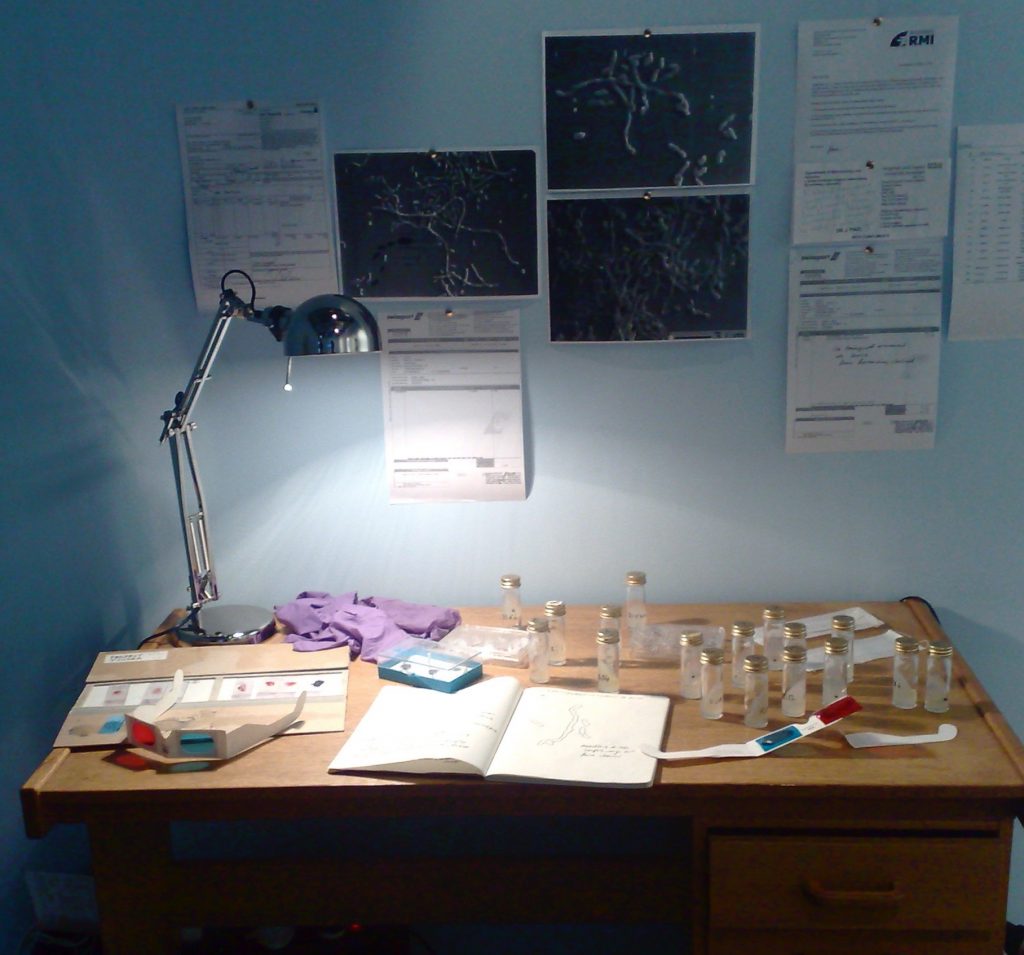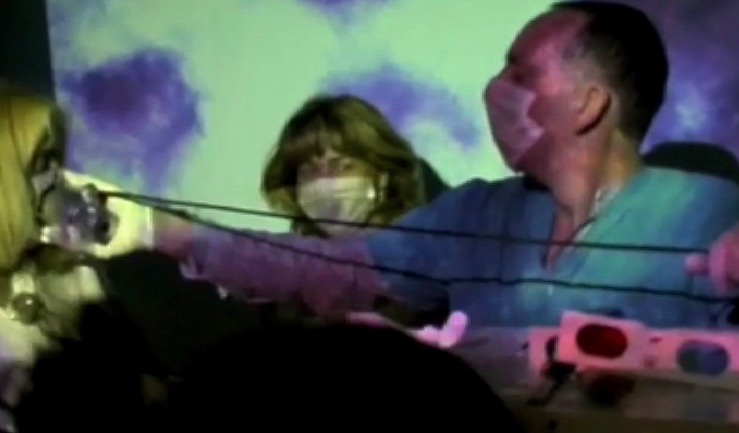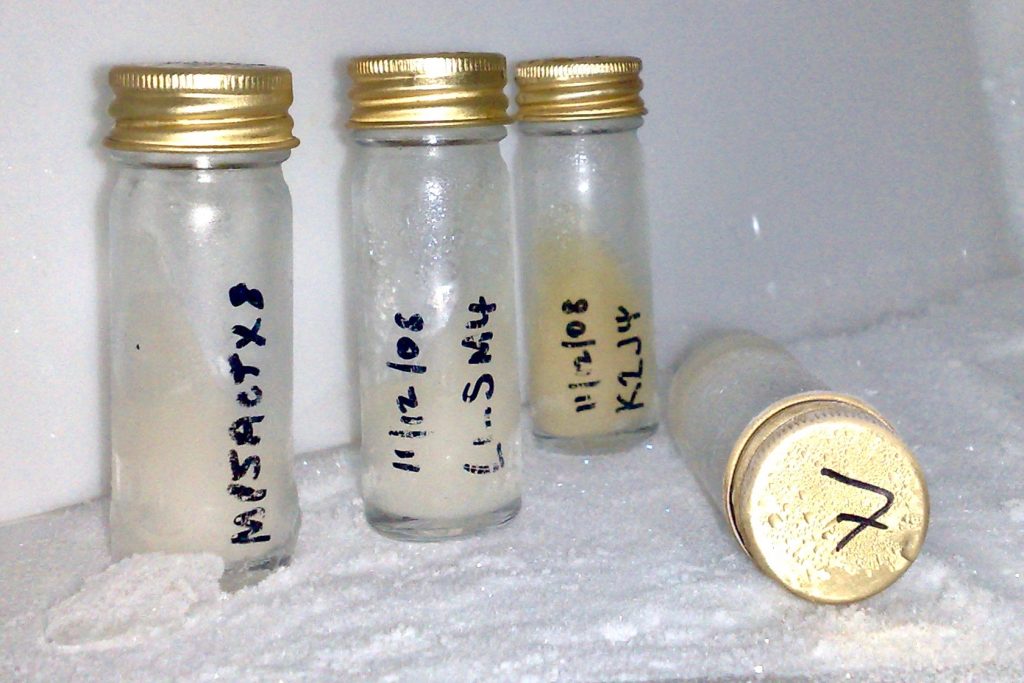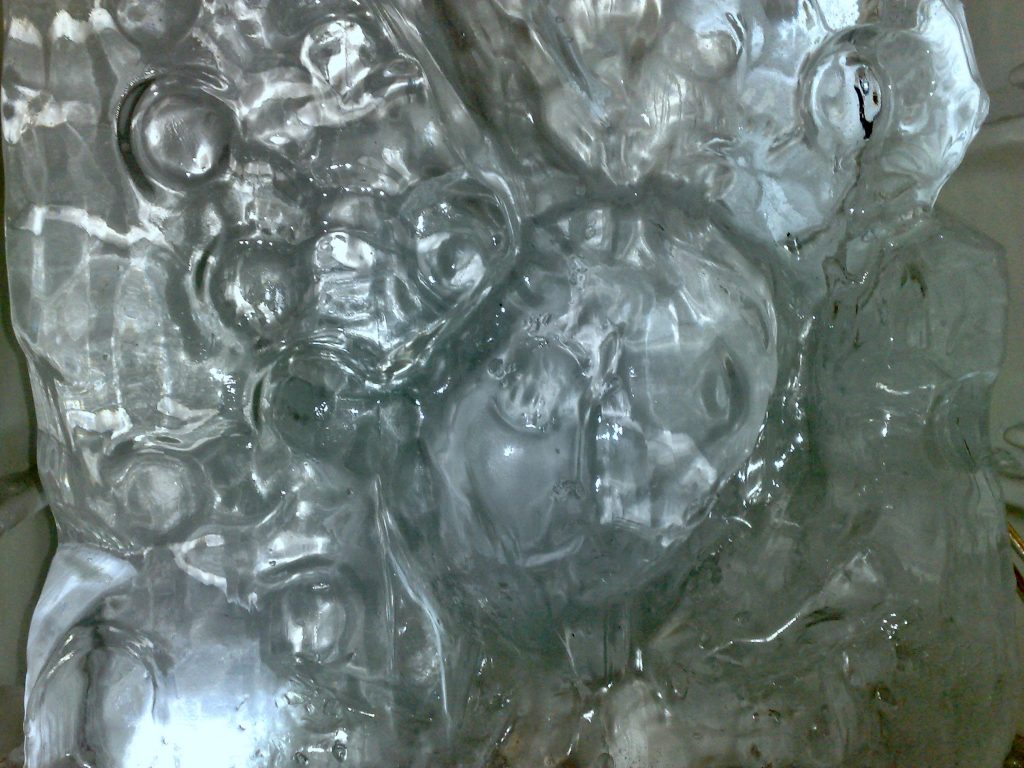“KryoLab” (2007-8) was a ‘live’ hands-on experience for the visitor who was to feel like they had just stumbled across a momentarily deserted laboratory room – where scientists (and artists) were clearly striving to understand the complex Arctic ecosystem. The work explored individual and also collective responsibility about climate change and melting Arctic ice (the “KryoLab” block of ice – which never remains static as the installation freezer is repeatedly opened and closed and explored by visitors).

The ice block was cut out and transported by air from Rovaniemi in Finland via Helsinki and Budapest to Thessaloniki. For the Katowice exhibition the lake ice came from Rovaniemi via Helsinki to Warsaw and then it was transported by car to Katowice. This flamboyant excess of transportation is in itself a contradiction to our personal concern regarding climate change – and makes clear the layers of contradictions, complexity and ethical responsibility in our actions and the roles we all play in the process of climate change. The air transport waybills were casually pinned to the wall to make this contradiction explicit.

The carving of the ice into a form based on scanning electron microscopy of bacteria isolated from Arctic ice was done as part a live performance in Thessaloniki by Antti Tenetz and sonified by Dave Lawrence, chips from the ice were passed to members of the audience by Anna Dumitriu who closed the visitors hands around them, they literally held the fate of the melting arctic ice in their hands.

Dr Minna Männistö supplied the team with 17 newly discovered strains of Arctic soil bacteria and a recipe for a culture medium that is far more effective for growing them. Back in Brighton, UK, Anna Dumitriu worked with her long-term collaborator Professor John Paul to further investigate the behaviour of these, often brightly coloured, organisms and photograph and video them using a range of high quality microscopes (with the help of The University of Brighton’s Image Analysis Lab) including three dimensional scanning electron microscopes. These investigations formed the inspiration for sculptures (containing the genuine individual bacterial strains) carved in Arctic ice by Antti Tenetz. These beautiful and mysterious psychrophiles will not survive at body temperature and are therefore completely harmless to humans. But they are important regulators and indicators of the Earth’s climate.

The samples of living Arctic bacteria, the live sonic compositions and the ice sculpting came together for a live performance at the start of the exhibition. During these events, as the ice was carved, the chips of Arctic ice were collected and distributed to the audience, in whose hands the ice melted and disappeared. It may well be a once in a lifetime experience for people, to hold Arctic ice in their own hands, and it has a profound and sublime emotional effect which brings to attention issues around the melting polar ice.
Exhibitions and outcomes
Thessaloniki Centre for Contemporary Art as part of the 2nd Thessaloniki Biennale in Greece in July 2009.
Rondo Gallery in Katowice, Poland accompanied by a lecture.
Dumitriu, Tenetz and Lawrence co-authored a paper for Leonardo Art and Science Journal on the work.
After the final exhibition of Kryolab and due to the excessive storage requirements, in a strange twist, Dave Lawrence collaborated with Liberate TATE, who were linked to Occupy London to use the Arctic ice to part of an activist performance which in protest against the sponsorship of TATE by BP on 16th January 2012. See more in this article by the Independent newspaper. Antti Tenetz and Dave Lawrence were able to participate in this ritualistic ice melting in the Turbine Hall at Tate Modern.
Supporters
This project was developed as part of the European Mobile Lab for Interactive Art (e-MobiLArt) Project and funded by the CULTURE 2007 Programme of the European Union, with specific funding for KryoLab 2 at the Rondo Gallery from Arts Council England. The team are grateful for the support of the e-MobiLArt partners and in particular the project manager Dimitris Charitos and the curatorial committee of Annick Bureaud, Roger Malina, Nina Czegledy, and Christiana Galanopoulou.
